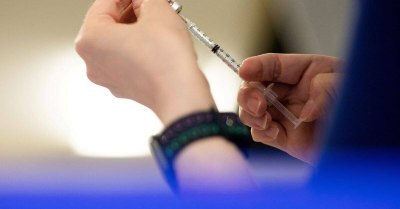Reuters-Eris BA286 Do I need to worry about COVID again
August 19, 2023 4 min 653 words
这篇报道强调了对新冠病毒变种BA.2.86的关注,尽管它具有36个与当前主要XBB.1.5变种不同的突变,但尚无证据表明它传播更快或引发更严重的疾病。报道提到全球COVID感染和住院病例增加,其中Eris亚变种占比较多。专家们认为BA.2.86的突变结构与以前的变种相比“根本不同”,但尚不清楚它是否具有更高的传播性。此外,病例增加速度导致对其前景存在担忧。报道还强调了疫苗的有效性,目前的疫苗似乎仍然对新变种具有一定的保护作用,而新的疫苗正在开发中。总的来说,这篇报道提醒人们继续保持警惕,但同时也表明目前尚不清楚新变种的具体威胁程度,需要继续研究。
The World Health Organization and the U.S. Centers for Disease Control and Prevention are tracking a new, highly mutated lineage of the virus that causes COVID-19.
Six cases in four countries have been detected since late July. Scientists are keeping an eye on the new lineage, named BA.2.86, because it has 36 mutations that distinguish it from the currently-dominant XBB.1.5 variant.
So far there is no evidence that BA.2.86 spreads faster or causes more serious illness than previous versions. The CDC said its advice on protecting yourself from COVID remains the same.
COVID infections and hospitalizations have been rising in the U.S., Europe and Asia, with more cases in recent months attributed to the EG.5 "Eris" subvariant, a descendant of the Omicron lineage that originally emerged in November 2021.
Over the past few days, public health authorities have documented one case each of BA.2.86 in the United States, the UK, and Israel, and three cases in Denmark.
BA.2.86 stems from an "earlier branch" of the coronavirus, so it differs from the variant targeted by current vaccines, explained Dr. S. Wesley Long, medical director of diagnostic microbiology at Houston Methodist Hospital.
He said it remains to be seen whether BA.2.86 will be able to out-compete other strains of the virus or have any advantage in escaping immune responses from prior infection or vaccination.
But many countries have drastically reduced testing of patients and their efforts to analyze the genomes of the viruses causing new COVID cases. In that situation, the trajectory of BA.2.86 "doesn't look good right now," given the speed at which new cases are being identified, said Dr. Eric Topol, a genomics expert and director of the Scripps Research Translational Institute in La Jolla, California.
Its many mutations make BA.2.86 "radically different in its structure" compared to earlier variants, Topol said.
The main question, he added, is whether BA.2.86 will turn out to be highly transmissible.
U.S. emergency department visits and hospitalizations for COVID remain low, but have been rising since early July, according to data on the CDC website. So far, however, doctors have been reporting that patients seen in recent weeks, as the Eris variant has been spreading, are not as sick as those they treated during earlier waves of the pandemic.
Wider spread of BA.2.86 would likely cause more illness and death in vulnerable populations, Topol said.
It is too soon to know whether BA.2.86 will cause more-severe illness.
"Based on the available evidence, we do not yet know what risks, if any, (BA.2.86) may pose to the public's health beyond what has been seen with other currently circulating lineages," a CDC spokesperson said.
Due to the waning of the pandemic, it may have been a year or more since many people were either previously infected or vaccinated against COVID.
"The vaccine is still going to provide you great defense against illness and death," Long said.
Updated COVID booster shots now being developed have been designed to target the Omicron subvariant XBB.1.5.
Moderna said preliminary trial data suggest its latest version of the vaccine shows promise against Eris and a related variant called Fornax, which has begun to circulate in the U.S.
Pfizer Inc has said its updated COVID-19 shot showed neutralizing activity against the Eris subvariant in a study conducted on mice.

